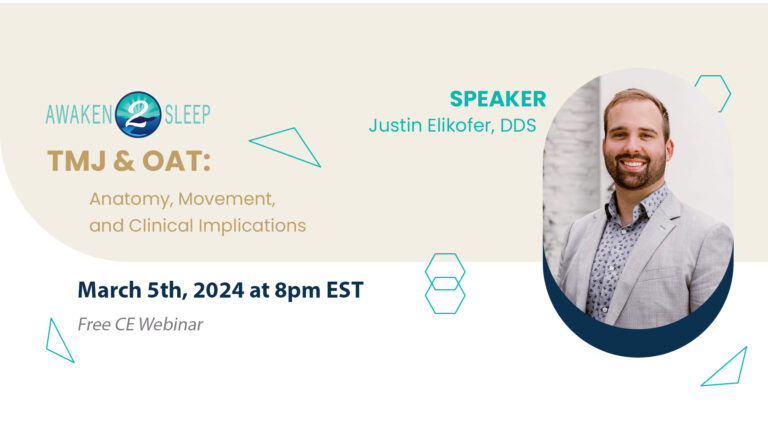The Great Debate: FFS VS Medical Billing
By Mona Patel
Most dental sleep medicine courses teach that you need to use medical billing when you get started helping patients with obstructive sleep apnea (OSA).
Often these courses have some focus on medical billing and you may leave thinking that medical reimbursement will be a big part of your sleep program. If you’re like most dentists, including myself, then your experience with medical insurance has been quite different.
Getting started in sleep was challenging enough! We had to learn which home sleep test to use, what to charge, which appliance to use, how to treatment plan sleep appliances, and how to build systems for our team.
Medical Billing added a layer of complexity and confusion which only overwhelmed my team, myself and my patients.

I was at a loss as to how we were able to get case acceptance for large restorative cases but struggled with appliances. So we decided to use a Fee For Service Model (FFS), just like my restorative practice.
Now several years later, I can confidently say that I wouldn’t have done it any other way. Other colleagues of mine do successfully use medical insurance reimbursement in DSM, these colleagues primarily have sleep practices, and it is a must to be able to bill to medical insurance.
Here are the benefits of combining a restorative practice with dental sleep medicine:
- Simplifies collections
- Reduces confusion for patients
- Creates value-focused Tx Plan
- Allows for 3rd-party financing options
In our practice, patients can feel confident in exactly what they are getting, what they are paying, and the options for payment. We focus on building tremendous value and making it very easy for our patients.

Medical insurance isn’t all negative though, here are some benefits:
- Potentially reduced cost for the patient
- Potentially increased case acceptance
- Adds value to your office offering alternative financial options
What about the negatives?
For us, there weren’t any negatives for our FFS model because our office was already FFS. This allowed our workflow and verbiage to be similar when engaging with patients. That being said, if you accept dental insurance, patients may ask why you don’t bill medical insurance. When this happens, we say something similar to:
We are not contracted with insurance and offer to provide any documentation they (the patient) need to pursue reimbursement independently.
This negative is now an opportunity to build even more value.
What about medical insurance?
When we started to attempt to bill we had an interesting experience and found these negatives:
- High patient expectations
- High deductible
- Low coverage limitations
- Complicated workflow
- Confusing timeline
High Patient Expectations:
Typically when a patient goes into a medical office for a visit they may have to pay a copay, but any additional procedures that they get the bill is processed and sent to them via the mail. This has led to the misconception that “medical insurance covers everything.” As we know, any type of insurance rarely covers everything.
This misunderstanding, and these high expectations of their medical insurance led to many patients being frustrated and saying no because their medical insurance didn’t cover it.
Why were they able to sell restorative cases that weren’t completely covered and yet OSA cases were different?

High Deductible:
With the high expectations of coverage there was a misunderstanding about patient deductible. Goodrx.com shares these stats:
“In the health insurance marketplace, the 2021 median individual deductible for bronze-level plans was $6,992. For silver plans, the median figure was $4,879; for gold plans, it was $1,533.”
For 2/3s of the plans my appliance fee wasn’t enough to meet their deductible so they owed my 100% anyways.
Low Coverage Limitations, Complicated Workflow, Confusing Timeline:

In certain states Blue Cross Blue Shield only covers 10% above your lab bill for an appliance billed E0486. You can’t submit a claim to the insurance company until you’ve delivered the appliance, and they don’t have to respond to your claim for 30 days.
Respond doesn’t mean approve or deny, it means they can also ask for more information.
All in all, for our practice, medical billing added cost, complexity, and confusion.
Patients would get upset when we had to send them a bill for the remainder of their treatment plan 30 days after we provided the appliance.
Why It Matters - Medical Insurance Is A Tool
Medical insurance isn’t bad.
It’s often beneficial for practices and can contribute to cultivating physician relationships, building value, and contributing to long term referral potential, but it isn’t required to succeed in DSM.
Medical insurance is a tool, but all tools have a time and place.
Don’t use a hammer to fix your scanner.
For our practice, it made sense to use a fee-for-service model; to keep it simple, increase production, and build value.
Medical billing isn’t the only way to do sleep in your practice.
Which is suitable for your team?
To learn how to help patients inside of your restorative practice use the button below to see upcoming courses!
Source
Roberte, Lorraine. “All You Need to Know about Health Insurance Deductibles.” GoodRx, GoodRx, 17 Dec. 2021, https://www.goodrx.com/insurance/health-insurance/all-you-need-to-know-about-health-insurance-deductibles.








